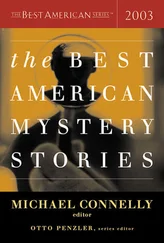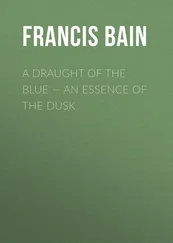Dr. Gachet removes his blue jacket and drapes it over the stone wall, places his cap upon it, then takes off his shirt and rips it in two. With half the shirt he blindfolds the artist, and while he is tying the knot, he studies the artist’s nubby ear. Lower half of left ear excised , he notes, by means of a diagonal incision, beginning posteriorly toward the top of the ear and cutting anteriorly through the tragus. Hemorrhaging likely was extensive . He runs his thumb over the hardened scar tissue along the line of the cut. The artist tilts his head, leans into the doctor’s hand, as if to say, Carry this, please, carry this .
Dr. Gachet places the other half of the shirt in the artist’s hand. “Put it on me,” he says, and the artist, with his long, bony fingers, blindfolds him. The doctor can smell his own sweat in the fabric as well as traces of dinner on the artist’s hands — rosemary, goat cheese, some kind of berry.
They hold hands and stride through the cemetery, Dr. Gachet leading them toward the open grave in the northeast corner that was dug that morning for old Madame LaChance. They bark their shins on gravestones and trample flowers and kick-scatter tiny rocks on the pathway until at last they step together into nothing.
Inside the grave, they slip off the blindfolds. Warm pain thrums in the doctor’s ankle. Dirt streaks his waxy, sagging belly. The artist sniffs at the sweetly loamy air.
The doctor gestures upward, and together they look up at the rectangle of sky in its frame of brown earth. Night is falling in a mad indigo swirl.
“A beautiful sky,” the artist says.
“So you see,” the doctor says, “it is not the worst thing, to fall in a ditch.”
“We are very much alike, you and I.”
“Stop saying that. I am your doctor .”
A crow alights at the grave’s edge and looks down at them, its head atilt in curiosity.
5. Dr. Gachet, with the heartbroken expression of our time [#1] (early June 1890)
Midafternoon in the garden. On the red garden table: foxglove in a vase and two novels by les frères Goncourt. My pose, he says, is modeled on Delacroix’s painting of the poet Tasso in the asylum at Ferrara, a pose that suggests that all the world’s melancholy is bearing down upon me.
“I enjoy painting portraits,” the artist says. “It consoles me up to a certain point for not being a doctor.” I tell him not to be absurd. He tells me to hold still.
I hold myself still and listen to the music of his work, to the slap and whisper of brush on canvas. I watch the blue smoke curl from his pinched lips. I feel the air around me turning bluer and bluer. “So much blue,” I say.
“Cobalt,” he says.
Ah. Of course, cobalt. All around me is cobalt. I am bathed in cobalt, drenched in cobalt, drowning in cobalt. I feel in cobalt. As the layers of paint accumulate, my understanding deepens along with the color. I understand that all I have ever known is cobalt, except for occasional periods of ultramarine and Prussian blue and indigo and slate blue and bice blue and cerulean and king’s blue and aqua and blue céleste and robin’s-egg and lilac and cyanine and lapis lazuli. What I would not give to live in viridian! To dance in vermilion! To love in Paris yellow and madder lake!
But no. I am but a tiny sun-scorched face peeking out, in vain, from the greedy, gulping maw of cobalt. All the world’s melancholy, bearing down upon me.
It is a wonder my neck does not snap.
6. Strolling with Henriette (June 24, 1890)
After dinner, Dr. Gachet feels a burn in his stomach that several spoonsful of Elixir do not extinguish, so he decides to go for a walk. He heads down the hill into town with his goat, Henriette, who follows attentively at his heels, only occasionally falling behind to nibble at the irises that grow along the road. A small girl rushes out of a house to pet the goat. She feeds Henriette crusts of bread and chunks of cheese, which she offers in a grubby palm, until an anxious mother’s voice calls her back inside.
Dr. Gachet and Henriette leave the road near the auberge and make their way through knee-high grass to the dilapidated barn where the artist has been storing his many new canvases. It is dark and gloomy inside. The walls are naked wood, with bits of straw poking out from between the boards. The goats in their pens call out when they smell Henriette and scrape their horns against the wooden gates. At the very rear of the barn, in a filthy hay-lined sty, are the artist’s works, some on the walls, some jumbled together on the ground. The doctor sits among the canvases and marvels, while Henriette wanders through the barn, sniffing at the other goats.
Two months from now, after the burial, Dr. Gachet will stand in the same spot, choosing which of the paintings to keep for himself, the artist’s brother having offered them in gratitude to those who looked after the artist in his last days. Monsieur Ravoux, the innkeeper, will claim but two — the portrait of his daughter and a rushed study of the Auvers Hôtel de Ville — before he shakes the executors’ hands and leaves. Dr. Gachet, giddy at all the beauty and genius on display, will choose more than a dozen before he hears someone clear his throat and he feels compelled to stop himself because of the absurd and maddening demands of decorum. “Roll them up, Coco,” he will tell his son, in whose dark eyes — heavy-lidded and deep-set like his father’s — roils the same hunger for art.
But tonight, as Henriette sniffs and nibbles, Dr. Gachet just sits and looks at these images: the swaying wheat fields and the vineyards, the trees undulating in the wind, a pair of children with knowing smiles, the thatched huts and yuccas, his own twenty-two-year-old daughter glowing angelically in the garden. He sits and marvels at the greatness before him, sits and allows himself for once not to feel lonely and not to feel the weight of melancholy and not to worry about his fickle beat-dropping heart, sits and allows himself to believe — deeply, for once — that he is helping, helping this artist work and live, helping this world become more beautiful, more bearable.
He sits there until Henriette comes up behind him and licks the back of his neck, telling him it is time to go. He hums to her as they climb the hill to his house, even improvises a sprightly little song:
Henriette, Henriette,
La plus jolie des toutes les bêtes,
Que penses-tu dans la tête,
Henriette, Henriette?
And he does not care if anyone hears, if anyone sees, if anyone knows that he is an old man who sings to goats.
7. Head over basin, with daughter Marguerite (June 28, 1890)
She takes a handful of powdered saffron from the pouch and spreads it through his wet hair, kneading and stroking as the powder becomes a thin, grainy paste. She rubs small circles on his scalp, then grasps pinches of his hair, gently tugging as she works the dye in, root to tip. As careful as she is, orange stains spread over his skin at the forehead and temples and will take weeks to wear off.
An hour later, she rinses him. He regards himself in the mirror. Even wet, his hair is still several shades lighter than the artist’s.
“Again,” he tells her, as orange droplets fall from his face, dotting the towel wrapped around his neck. “More. Redder.”
8. In the garden, at gunpoint (July 17, 1890)
The gun is Dr. Gachet’s own. Last week he gave it to the artist, who said he needed it to scare away crows that were plaguing him as he painted outdoors. Each afternoon since, the pastoral quiet has been disrupted by gunfire as the artist bangs away up in the fields. And just an hour ago, the dairy farmer Jomaron came pounding on the doctor’s front door in a state of vexation. That lunatic is frightening my stock, he complained, and their milk now has the bitter taste of fear. The farmer was unwilling to accept that this was a sacrifice to be made in the name of art; instead he accepted thirty francs in recompense.
Читать дальше












